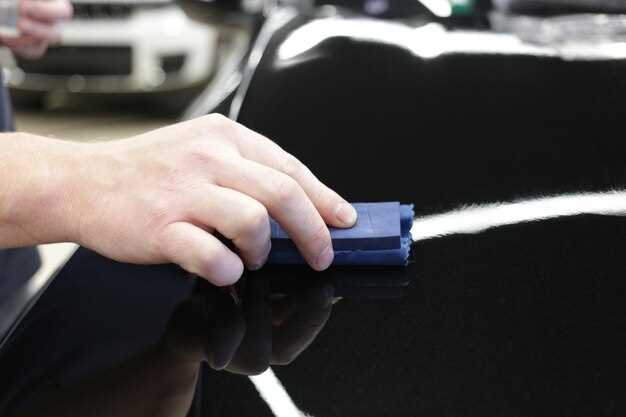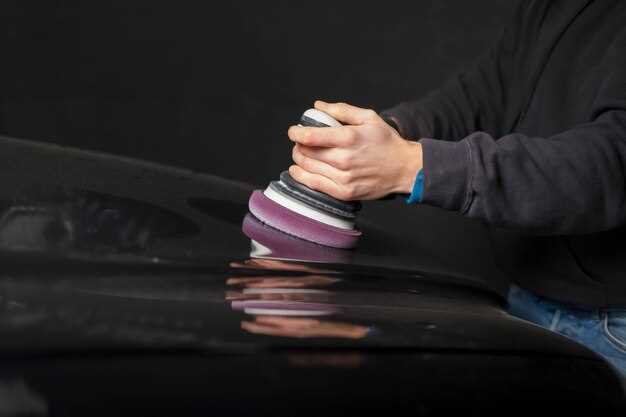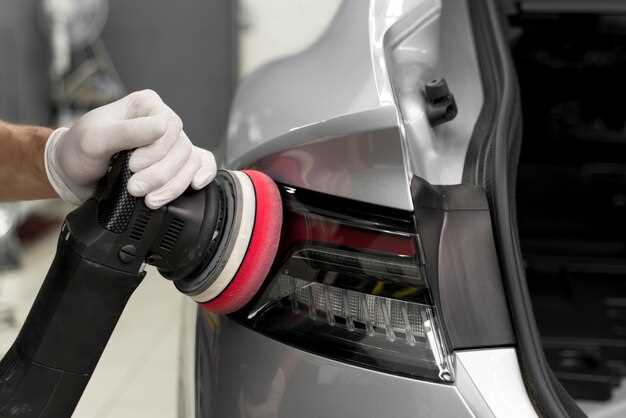
Maintaining the pristine appearance of your car’s exterior is essential for both aesthetic appeal and retaining its value. However, improper polishing techniques can lead to unwanted marks and swirl patterns that detract from the shine you seek. Understanding the right methods and tools is crucial for achieving a mirror-like finish without compromising the integrity of the paint.
The car’s paintwork is delicate, and various factors–such as the type of polish used, application methods, and even environmental conditions–can affect the final outcome. To ensure that you can polish safely, it’s important to familiarize yourself with suitable products and techniques that minimize the risk of damage. This article will guide you through the essential steps and best practices for polishing your vehicle while maintaining its flawless appearance.
By focusing on the right approach, you can effectively eliminate swirl marks and enhance the gloss of your vehicle’s paint. With the right knowledge and techniques, you can achieve professional-grade results right in your own garage, leaving your car looking as good as new.
Choosing the Right Buffer for Your Car’s Finish
When it comes to maintaining the pristine appearance of your car’s paint, selecting the right buffer is crucial. A quality buffer can enhance the shine of your vehicle while effectively minimizing the risk of damaging the finish. Understanding the types of buffers available is essential to achieve the best results.
Rotary Buffers are powerful tools that provide intense polishing action. While they can quickly remove defects and swirls, they require a skilled hand to prevent paint damage. It’s easy to overheat the paint surface, leading to burns or haze. Therefore, if you opt for a rotary buffer, ensure you have experience or seek professional help.
Dual-Action Buffers are a safer choice for most enthusiasts. These buffers combine rotary and orbital motions, which helps in evenly distributing the polishing compound and reduces the chance of creating new swirls. They are user-friendly and are less likely to cause damage, making them ideal for those who are less experienced.
When selecting a buffer, consider the pad material as well. Foam pads are the most commonly used, and they come in various densities. Soft foam pads are best for applying wax and sealants, while more rigid options are suitable for correcting deeper imperfections. Always match the pad to the intended task to ensure effective results.
Finally, remember to use the correct polishing compound in conjunction with your buffer. Different compounds are designed for specific finishes. Testing products on a small, inconspicuous area before full application can save you from potential disasters.
By carefully choosing the right buffer and following best practices, you can maintain your car’s finish without inducing swirls or other imperfections. The right tools, when used correctly, will protect your investment and keep your vehicle looking its best.
Techniques to Avoid Swirl Marks While Polishing

To achieve a flawless finish when polishing your car, it is essential to minimize the risk of swirl marks. Here’s how to do it effectively:
First, select the right buffer. A dual-action buffer is preferred for beginners, as it distributes pressure evenly and reduces the chance of creating swirl marks. When using any buffer, ensure that the pad is appropriate for the task; a soft foam pad can help achieve a smooth surface while minimizing scratches.
Before polishing, thoroughly wash and dry the car to remove any dirt or debris. Contaminants can cause scratches during the polishing process. Use a high-quality car shampoo and microfiber towels to ensure a clean surface. Additionally, applying a clay bar treatment can remove embedded particles and enhance paint smoothness.
When applying the polish, use a small amount and spread it evenly across the pad. It’s essential to work in sections and avoid applying too much pressure on the buffer. Allow the buffer to do most of the work; just guide it gently. Maintain a consistent speed and use overlapping passes to ensure even coverage without concentrating on one area too long.
Always keep the buffer moving. Stopping in one spot can generate excessive heat, leading to paint damage and swirl marks. Adjust your technique by varying the speed and direction of the buffer; this will help achieve a more uniform finish.
In addition to these techniques, consider using a finish polish or a spray sealant after buffing to add depth and protect the paint. This not only enhances the overall appearance but also creates a barrier that helps prevent further swirl marks from forming in the future.
Essential Steps for Preparing Your Car Prior to Polishing

Before applying any polish, it’s vital to prepare your car properly to achieve optimal results and avoid damage to the paint. Here are the essential steps:
1. Wash the Car Thoroughly: Begin by washing your vehicle using a pH-balanced car shampoo. This step removes dirt, debris, and contaminants. Make sure to pay attention to areas like the wheel wells and underneath the car, as grime can cause swirl marks during polishing.
2. Dry the Surface: After washing, dry the car using a soft microfiber towel. This prevents water spots from forming and minimizes the risk of scratches when you move on to polishing.
3. Inspect for Defects: Examine the paint closely for any imperfections, such as swirls, scratches, or oxidation. Identifying these areas will help you target your efforts more effectively. If necessary, use a paint depth gauge to ensure the paint is thick enough for polishing.
4. Clay Bar Treatment: To remove embedded contaminants, use a clay bar. This step ensures that the surface is perfectly smooth, which is crucial before using a buffer. A clean surface will enhance the polishing process and reduce the chance of creating additional swirl marks.
5. Mask Areas Not to Be Polished: Apply painter’s tape to trim, plastics, and other areas that you do not want to polish. This precaution helps to prevent accidental damage by the buffer and ensures a more refined finish.
6. Choose the Right Pad and Polish: Select an appropriate polishing pad and polish based on the condition of your paint. A softer pad may be suitable for light imperfections, while a more aggressive pad may be necessary for deeper swirls or scratches.
7. Test on a Small Area: Before proceeding with the entire car, test the polish and buffer combination on a small, inconspicuous area. This ensures that the products are compatible with your paint and will not cause any unwanted damage.
By following these preparation steps, you can polish your car safely and effectively, maximizing shine while minimizing the risk of damaging the paint.






